Your cart is currently empty!
Tag: Frameworks

Theoretical Frameworks for Cloud Computing: A Comprehensive Overview
Cloud computing has revolutionized the way businesses store, manage, and access their data. With the increasing popularity of cloud services, it has become important for researchers and practitioners to understand the theoretical frameworks that underpin this technology. In this article, we will provide a comprehensive overview of the theoretical frameworks for cloud computing.One of the key theoretical frameworks for cloud computing is the service-oriented architecture (SOA). SOA is a software design approach that structures applications as a collection of loosely coupled services. In the context of cloud computing, SOA allows for the creation of scalable and flexible applications that can easily be deployed and managed in the cloud. By breaking down applications into smaller, reusable services, organizations can take advantage of the scalability and cost-efficiency of cloud computing.
Another important theoretical framework for cloud computing is virtualization. Virtualization is the process of creating a virtual version of a physical resource, such as a server or storage device. In cloud computing, virtualization allows for the efficient use of resources by enabling multiple virtual machines to run on a single physical server. This helps to improve resource utilization and reduce costs, making cloud computing a cost-effective solution for businesses of all sizes.
Security is another key aspect of cloud computing that is guided by theoretical frameworks. The shared nature of cloud environments means that security is a critical concern for organizations using cloud services. The concept of multi-tenancy, where multiple users share the same physical resources, requires robust security measures to ensure the privacy and integrity of data. Theoretical frameworks such as the Cloud Security Alliance’s Security Guidance for Critical Areas of Focus in Cloud Computing provide best practices and guidelines for securing cloud environments.
Data management is also a critical aspect of cloud computing that is guided by theoretical frameworks. The ability to store, access, and analyze data in the cloud is essential for organizations looking to leverage the power of big data and analytics. Theoretical frameworks such as the CAP theorem, which states that it is impossible for a distributed system to simultaneously achieve consistency, availability, and partition tolerance, help to inform data management strategies in cloud computing environments.
In conclusion, theoretical frameworks play a crucial role in guiding the design, implementation, and management of cloud computing systems. By understanding these frameworks, organizations can make informed decisions about how to best leverage cloud technology to achieve their business goals. Whether it is through service-oriented architecture, virtualization, security, or data management, theoretical frameworks provide a solid foundation for building successful cloud computing solutions.
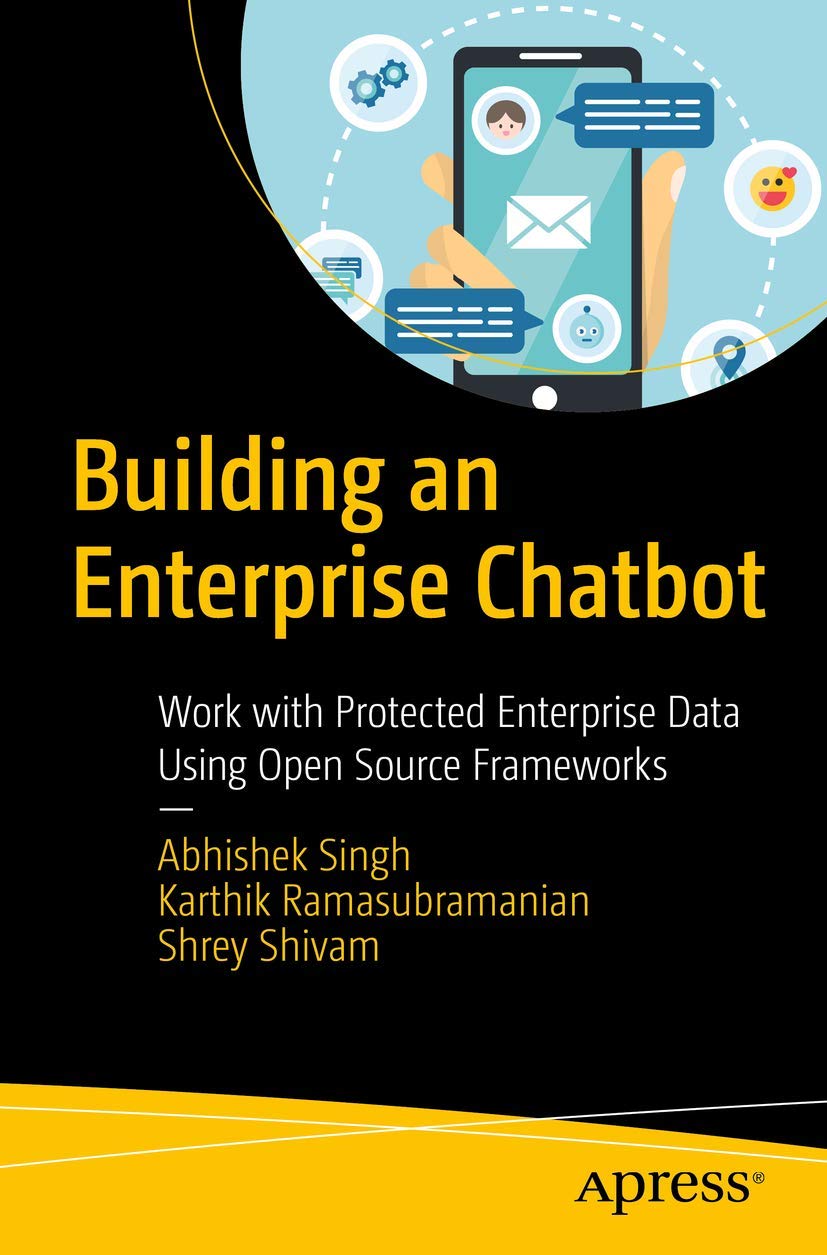
Building an Enterprise Chatbot: Work with Protected Enterprise Data Using Open Source Frameworks
Price:$64.99– $33.86
(as of Dec 02,2024 12:53:47 UTC – Details)
Publisher : Apress; 1st ed. edition (September 13, 2019)
Language : English
Paperback : 407 pages
ISBN-10 : 1484250338
ISBN-13 : 978-1484250334
Item Weight : 1.26 pounds
Dimensions : 6.1 x 0.92 x 9.25 inches
Building an Enterprise Chatbot: Work with Protected Enterprise Data Using Open Source FrameworksIn today’s digital age, enterprises are constantly looking for ways to improve efficiency and productivity. One way to achieve this is by implementing chatbots that can automate repetitive tasks and provide instant support to customers and employees. However, working with protected enterprise data presents a unique challenge when developing chatbots.
Open source frameworks such as Rasa and Botpress offer secure solutions for building chatbots that can work with protected enterprise data. These frameworks provide a flexible and customizable platform for developing chatbots that can integrate with enterprise systems and adhere to strict data privacy regulations.
When building an enterprise chatbot, it is important to consider the following key factors:
1. Data security: Ensure that the chatbot is designed to handle sensitive enterprise data securely and comply with data protection regulations.
2. Integration capabilities: Choose an open source framework that allows for easy integration with enterprise systems such as CRM, ERP, and databases.
3. Customization options: Look for frameworks that offer a high level of customization to meet the specific needs of your enterprise.
4. Scalability: Consider the scalability of the chatbot to ensure it can handle increasing volumes of data and interactions as the enterprise grows.
By leveraging open source frameworks and following these key factors, enterprises can build chatbots that can effectively work with protected enterprise data while improving efficiency and productivity.
#Building #Enterprise #Chatbot #Work #Protected #Enterprise #Data #Open #Source #Frameworks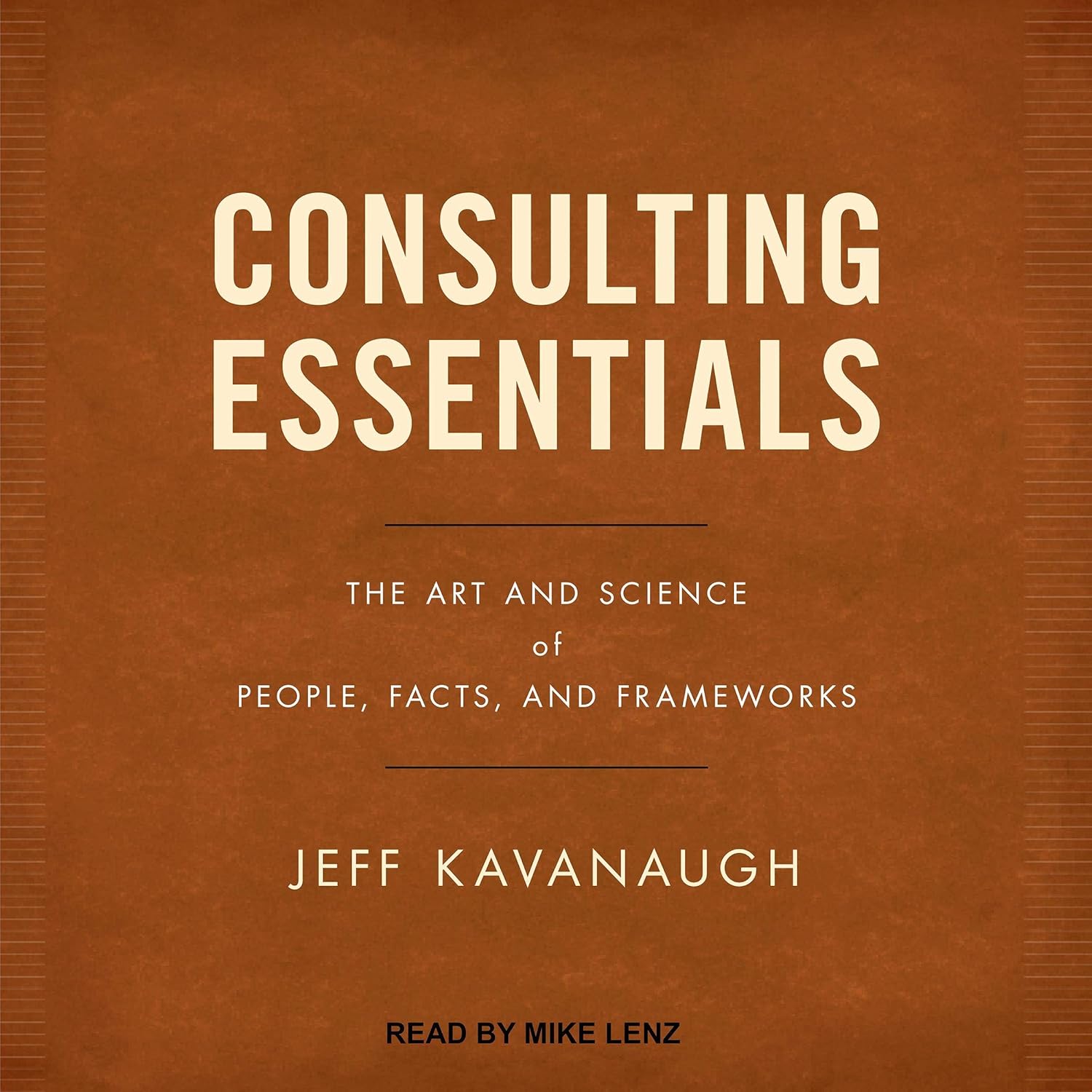
Consulting Essentials: The Art and Science of People, Facts, and Frameworks
Price: $0.99
(as of Dec 02,2024 05:49:39 UTC – Details)Customers say
Readers find the book informative for all professions and career levels. They also say it offers plenty of lessons and is useful for resharpening skills. Readers describe the writing as simple, concise, and to-the-point.
AI-generated from the text of customer reviews
In the world of consulting, mastering the art and science of people, facts, and frameworks is essential for success. Whether you are a seasoned consultant or just starting out in the industry, understanding how to effectively navigate these three key components is crucial in delivering impactful results for your clients.People are at the heart of consulting. Building strong relationships with clients, colleagues, and stakeholders is crucial in gaining trust and buy-in for your recommendations. Effective communication, active listening, and emotional intelligence are all essential skills for consultants to develop in order to effectively collaborate with others and drive successful outcomes.
Facts are the foundation of any consulting engagement. It is important to gather and analyze data, conduct thorough research, and validate assumptions in order to make informed decisions and provide valuable insights to your clients. Being able to effectively synthesize complex information and present it in a clear and concise manner is a key skill for consultants to master.
Frameworks provide structure and guidance for consulting projects. Whether you are using established methodologies, frameworks, or tools, having a systematic approach to problem-solving and decision-making can help streamline your work and ensure that you are delivering high-quality solutions to your clients. It is important to be adaptable and open-minded, and to continuously seek out new frameworks and approaches to enhance your consulting practice.
By mastering the art and science of people, facts, and frameworks, consultants can deliver value to their clients, drive successful outcomes, and build a strong reputation in the industry. It is important to continuously develop and refine these skills in order to stay competitive and continue to excel in the fast-paced world of consulting.
#Consulting #Essentials #Art #Science #People #Facts #Frameworks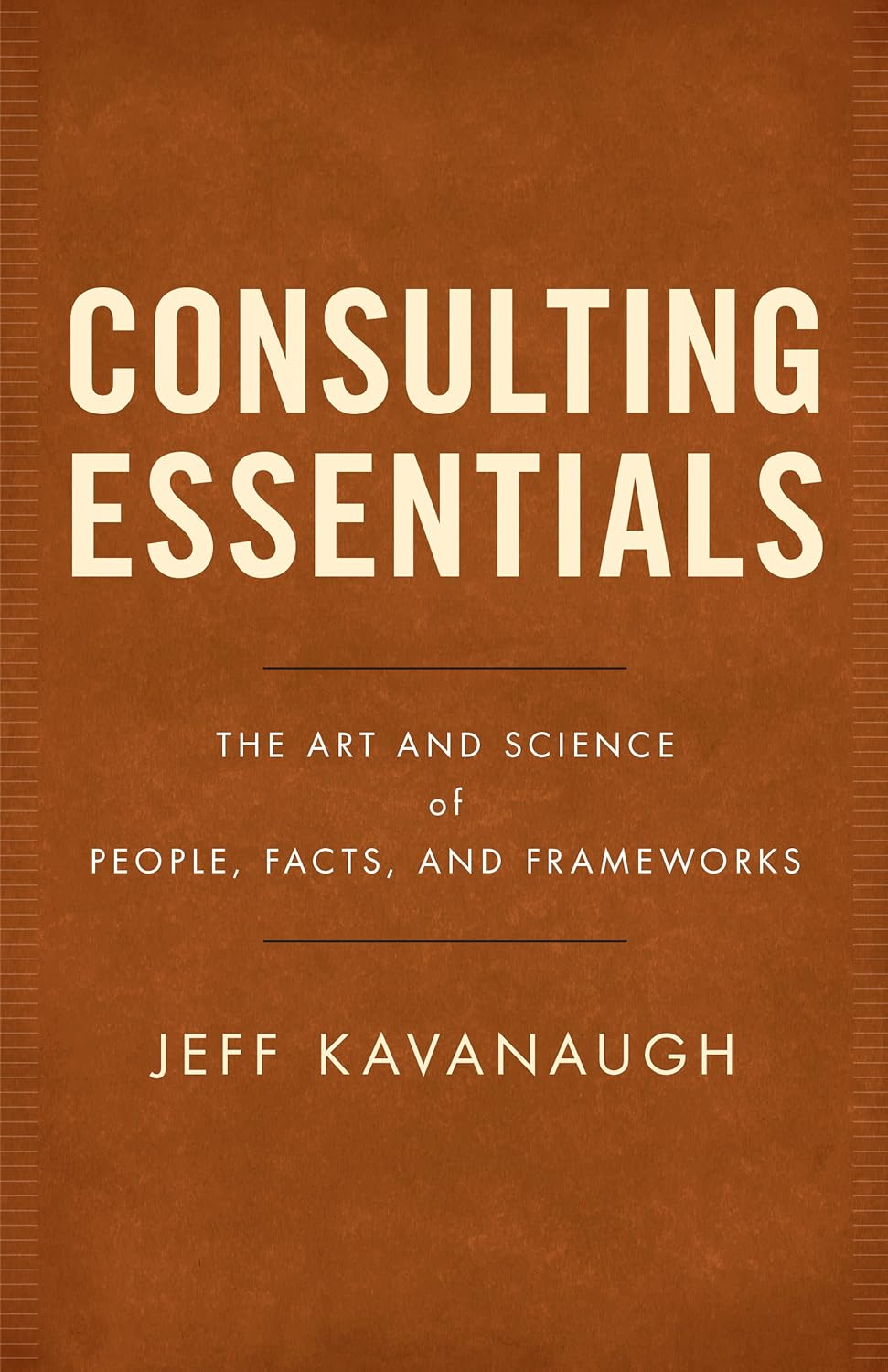
Consulting Essentials: The Art and Science of People, Facts, and Frameworks
Price: $6.99
(as of Nov 29,2024 03:34:04 UTC – Details)
ASIN : B079Q8QF1Y
Publisher : Lioncrest Publishing (April 16, 2018)
Publication date : April 16, 2018
Language : English
File size : 6513 KB
Simultaneous device usage : Unlimited
Text-to-Speech : Enabled
Screen Reader : Supported
Enhanced typesetting : Enabled
X-Ray : Enabled
Word Wise : Enabled
Print length : 432 pages
Page numbers source ISBN : 154451025XCustomers say
Readers find the book informative for all professions and career levels. They also say it offers plenty of lessons and is useful for resharpening skills. Readers describe the writing as simple, concise, and to-the-point.
AI-generated from the text of customer reviews
In the world of consulting, mastering the art and science of people, facts, and frameworks is essential for success. Whether you are a seasoned consultant or just starting out in the industry, understanding these key components can make all the difference in delivering effective and impactful solutions for your clients.People are at the heart of any consulting engagement. Building strong relationships with clients, stakeholders, and team members is crucial for gaining trust, collaboration, and buy-in. The ability to understand and navigate different personalities, communication styles, and motivations is key to effectively managing relationships and driving successful outcomes.
Facts are the foundation of any consulting project. It is essential to gather, analyze, and interpret data to make informed decisions and recommendations. Whether it’s conducting research, collecting feedback, or analyzing financial statements, having a strong grasp of the facts is critical for developing sound strategies and solutions.
Frameworks provide structure and guidance for consulting engagements. Whether it’s a project management framework, a problem-solving methodology, or a strategic planning model, having a solid framework in place can help streamline processes, ensure consistency, and drive results. By leveraging proven frameworks and methodologies, consultants can effectively navigate complex challenges and deliver value to their clients.
In summary, mastering the art and science of people, facts, and frameworks is essential for success in the consulting industry. By building strong relationships, leveraging data-driven insights, and utilizing proven frameworks, consultants can deliver impactful solutions that drive positive change and deliver value for their clients.
#Consulting #Essentials #Art #Science #People #Facts #Frameworks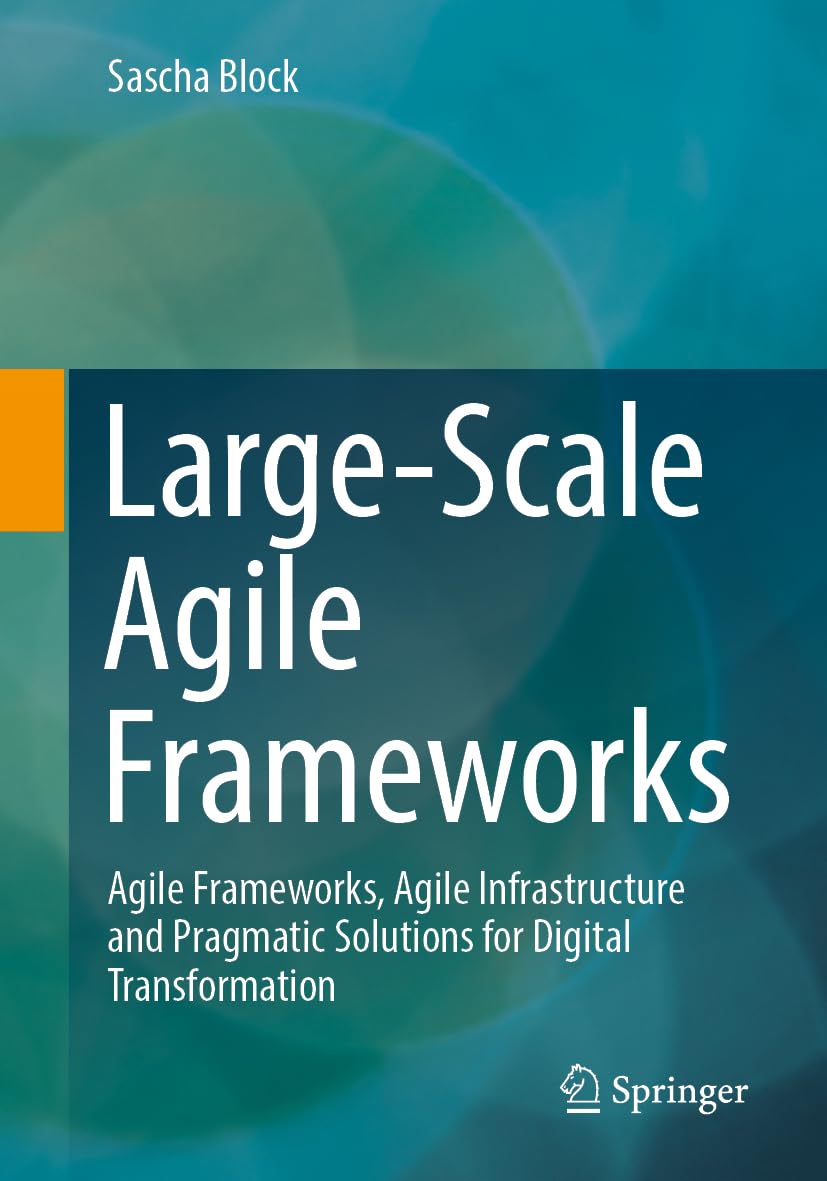
Large-Scale Agile Frameworks: Agile Frameworks, Agile Infrastructure and Pragmatic Solutions for Digital Transformation
Price:$59.99– $35.93
(as of Nov 27,2024 23:58:55 UTC – Details)
Publisher : Springer; 1st ed. 2023 edition (August 18, 2023)
Language : English
Paperback : 340 pages
ISBN-10 : 3662677814
ISBN-13 : 978-3662677810
Item Weight : 1.19 pounds
Dimensions : 6.61 x 0.77 x 9.45 inches
Large-Scale Agile Frameworks: Agile Frameworks, Agile Infrastructure and Pragmatic Solutions for Digital TransformationIn today’s rapidly evolving digital landscape, organizations are constantly seeking ways to adapt and thrive in the face of unprecedented challenges. Agile frameworks have emerged as a key strategy for enabling organizations to respond quickly to changing market conditions and customer demands. However, implementing agile at scale presents its own set of challenges.
Large-scale agile frameworks offer a structured approach to scaling agile practices and principles across an entire organization. These frameworks provide a roadmap for organizations to align their people, processes, and technology in a way that enables them to deliver value to customers faster and more efficiently.
Agile infrastructure is a critical component of large-scale agile frameworks. By creating an agile infrastructure, organizations can establish the necessary tools, processes, and governance structures to support agile development and delivery. This includes implementing DevOps practices, automating testing and deployment, and establishing cross-functional teams that can collaborate effectively.
Pragmatic solutions are essential for successful digital transformation. Organizations must identify the right mix of agile practices, tools, and processes that will enable them to achieve their digital transformation goals. This may involve implementing agile at different levels of the organization, leveraging agile project management methodologies, and investing in training and development for employees.
In conclusion, large-scale agile frameworks, agile infrastructure, and pragmatic solutions are key components of successful digital transformation initiatives. By embracing agile principles and practices at scale, organizations can adapt to change more effectively, deliver value to customers faster, and drive innovation and growth in today’s competitive marketplace.
#LargeScale #Agile #Frameworks #Agile #Frameworks #Agile #Infrastructure #Pragmatic #Solutions #Digital #Transformation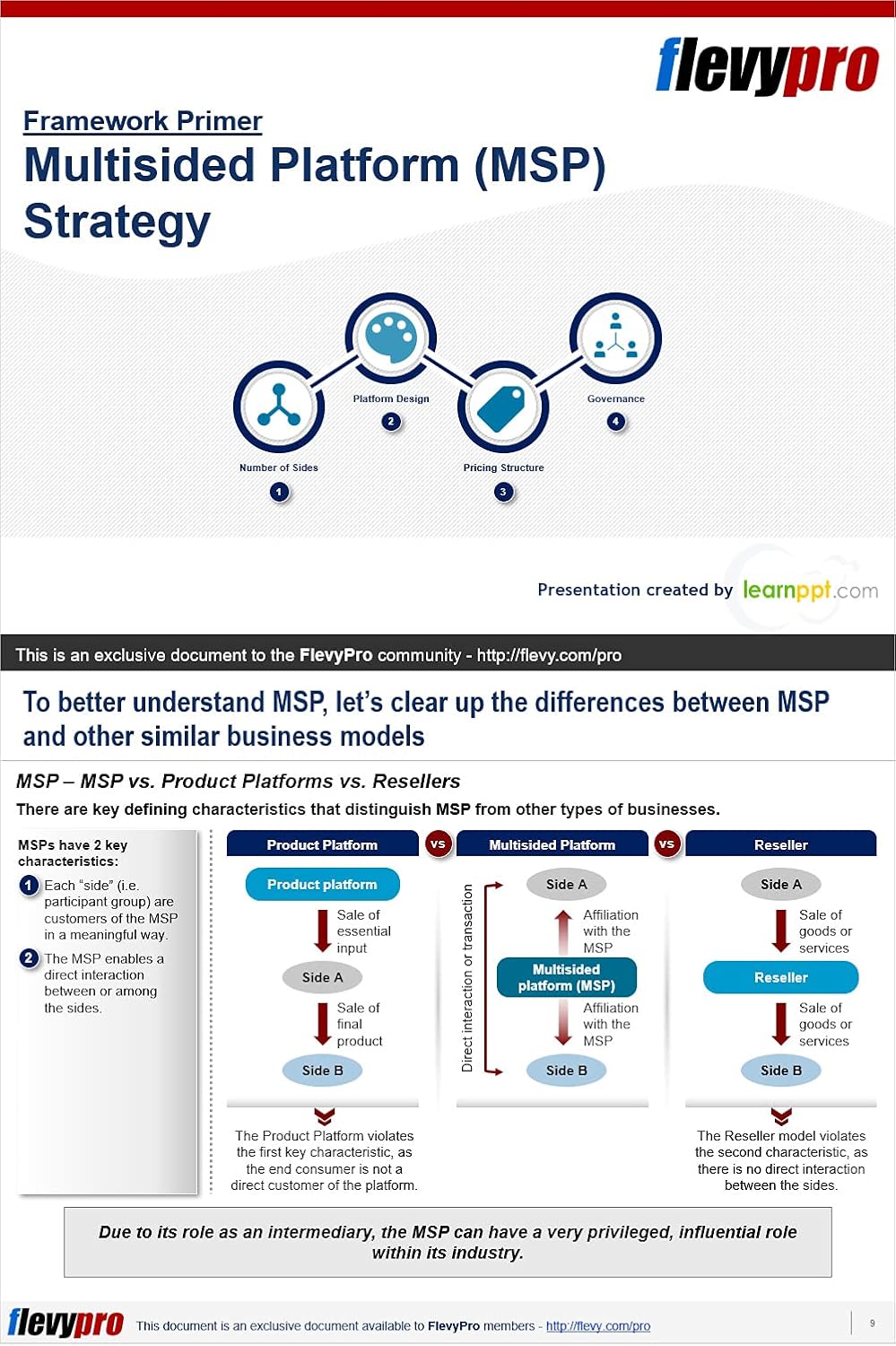
Multisided Platform (MSP) Strategy: Business Presentation (FlevyPro Frameworks)
Price: $13.49
(as of Nov 27,2024 00:24:37 UTC – Details)
ASIN : B094NXV9KW
Publication date : May 10, 2021
Language : English
File size : 7788 KB
Simultaneous device usage : Unlimited
Text-to-Speech : Enabled
Screen Reader : Supported
Enhanced typesetting : Enabled
X-Ray : Not Enabled
Word Wise : Enabled
Print length : 52 pages
In today’s competitive business landscape, companies are constantly seeking new ways to create value for their customers and drive growth. One strategy that has gained popularity in recent years is the Multisided Platform (MSP) Strategy.A Multisided Platform is a business model that connects two or more distinct customer groups, creating value by facilitating interactions between them. This can take the form of a marketplace, a social network, or a software platform that brings together buyers and sellers, advertisers and users, or any other combination of customer groups.
To help organizations understand and implement an effective MSP strategy, FlevyPro has developed a comprehensive framework that outlines the key components and steps involved in building and scaling a successful Multisided Platform. This framework covers everything from identifying customer segments and value propositions to designing the platform’s architecture and monetization strategy.
In our upcoming business presentation, we will delve into the details of the MSP Strategy framework, providing insights and best practices for companies looking to leverage the power of multisided platforms to drive growth and innovation. Participants will learn how to identify the right customer segments, create compelling value propositions, and design a platform that delivers a seamless and engaging user experience.
Join us for this informative and interactive session to discover how your organization can benefit from implementing a Multisided Platform Strategy. Don’t miss this opportunity to learn from industry experts and gain valuable insights into the future of business innovation.
#Multisided #Platform #MSP #Strategy #Business #Presentation #FlevyPro #Frameworks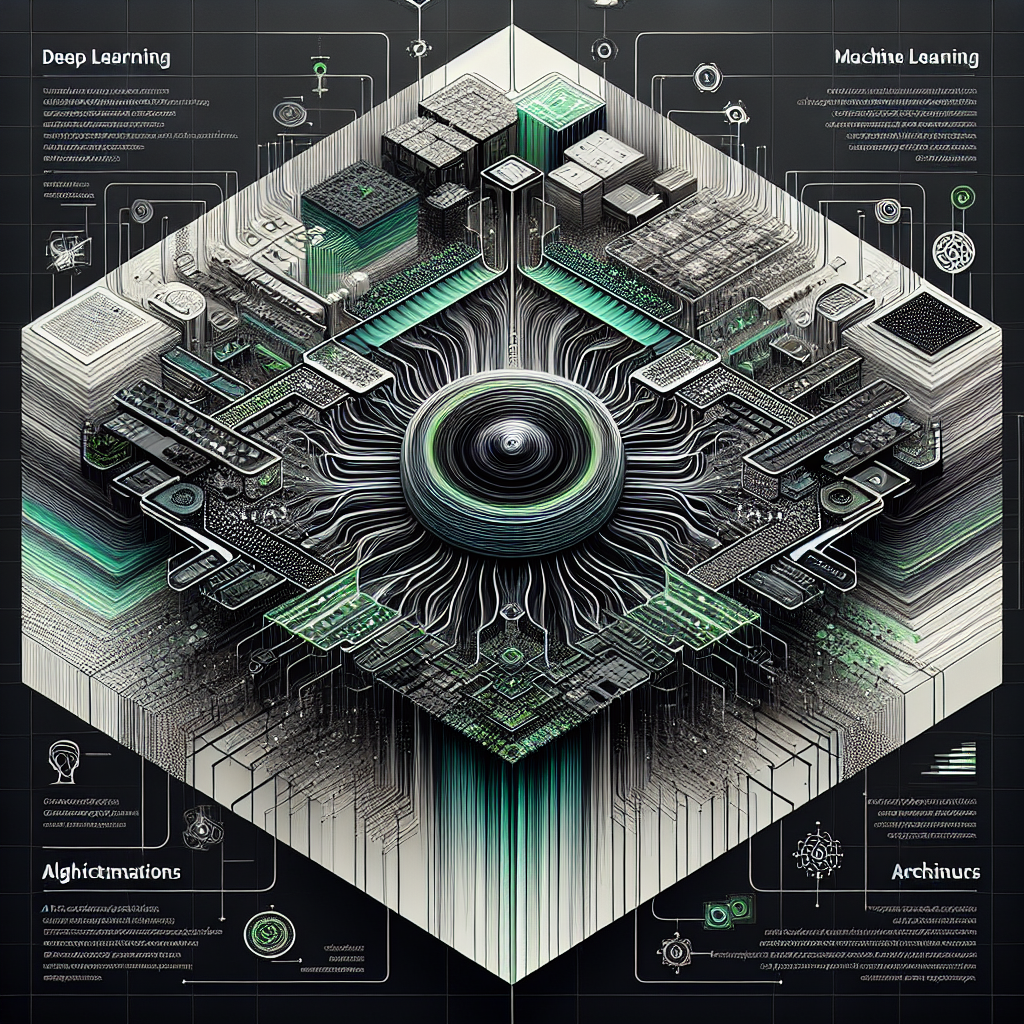
A Closer Look at NVIDIA’s Deep Learning Frameworks
NVIDIA is a leading technology company known for its cutting-edge graphics processing units (GPUs) that are often used in gaming and high-performance computing. However, NVIDIA has also made significant strides in the field of artificial intelligence (AI) through the development of deep learning frameworks.Deep learning is a subset of machine learning that involves training artificial neural networks to perform tasks such as image recognition, natural language processing, and autonomous driving. NVIDIA’s deep learning frameworks provide the tools and resources necessary for researchers and developers to build and deploy deep learning models efficiently and effectively.
One of NVIDIA’s most popular deep learning frameworks is TensorFlow, an open-source machine learning library developed by Google. NVIDIA has optimized TensorFlow to take advantage of its GPU architecture, allowing for faster training and inference times. This optimization has made TensorFlow an attractive option for researchers and developers looking to leverage the power of NVIDIA GPUs for their deep learning projects.
Another deep learning framework developed by NVIDIA is cuDNN, a GPU-accelerated library of primitives for deep neural networks. cuDNN provides optimized implementations of common deep learning operations, such as convolutional and recurrent neural networks, making it easier to build and train complex deep learning models on NVIDIA GPUs.
NVIDIA also offers a deep learning SDK called DIGITS, which provides a web-based interface for training and deploying deep learning models. DIGITS simplifies the process of building and testing deep learning models, making it accessible to a wider audience of developers and researchers.
In addition to these frameworks, NVIDIA recently introduced Triton Inference Server, a platform for deploying and scaling deep learning models in production environments. Triton Inference Server supports multiple deep learning frameworks, including TensorFlow and PyTorch, and allows for efficient inference on NVIDIA GPUs in data center and edge computing settings.
Overall, NVIDIA’s deep learning frameworks provide a comprehensive suite of tools and resources for researchers and developers looking to build and deploy deep learning models. With optimized libraries, web-based interfaces, and scalable deployment options, NVIDIA is at the forefront of AI research and development, making it a key player in the field of deep learning.
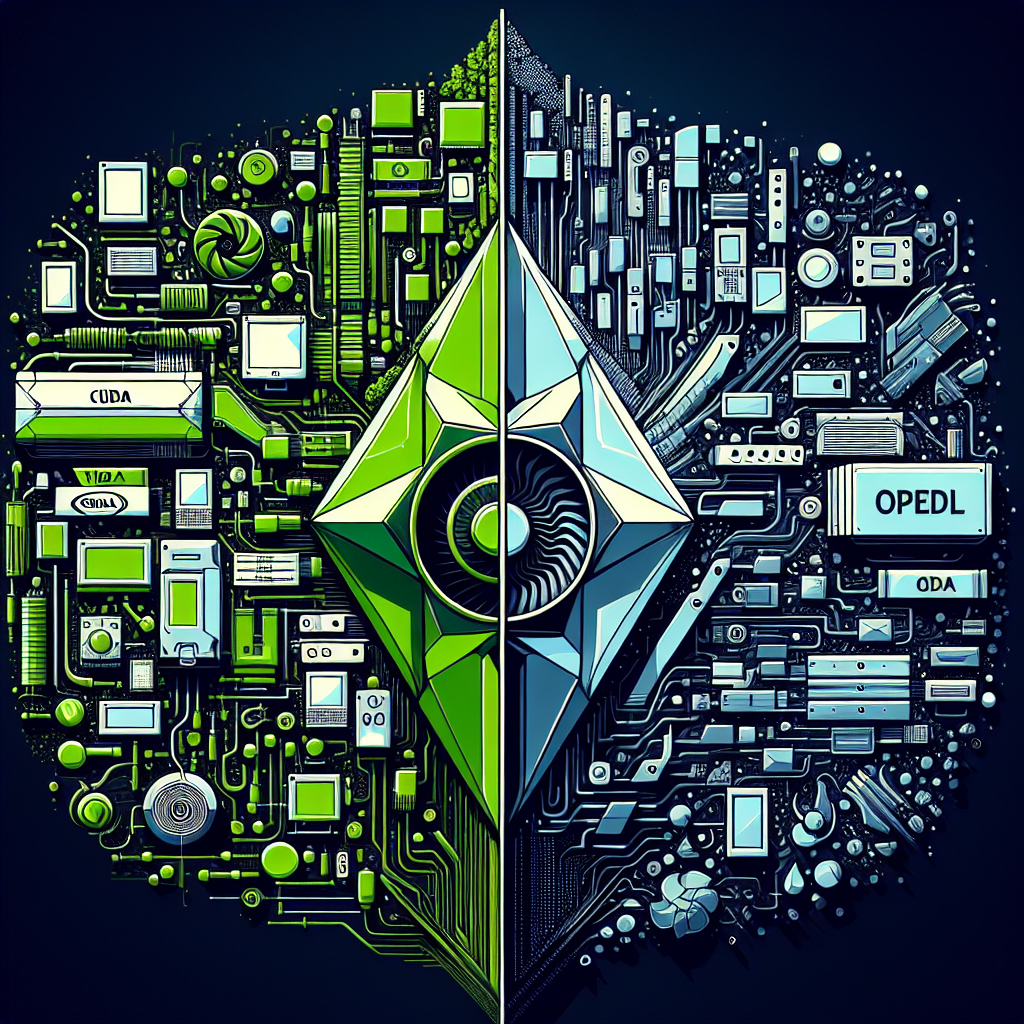
CUDA vs. OpenCL: Comparing GPU Computing Frameworks
In the world of GPU computing, two frameworks stand out as the most popular choices for developers looking to harness the power of graphics processing units (GPUs): CUDA and OpenCL. Both frameworks provide a way for developers to write code that can be executed on a GPU, taking advantage of its parallel processing capabilities to accelerate a wide range of applications. But how do these two frameworks compare, and which one is the best choice for your next project? Let’s take a closer look at CUDA and OpenCL to see how they stack up against each other.CUDA, developed by NVIDIA, is a proprietary framework that is specifically designed for NVIDIA GPUs. It offers a high level of performance and efficiency, as it is optimized to work seamlessly with NVIDIA hardware. CUDA provides a set of libraries and tools that make it easier for developers to write GPU-accelerated code, and it also includes a compiler that translates CUDA code into machine code that can be executed on the GPU. One of the key advantages of CUDA is its tight integration with NVIDIA’s hardware, which allows for fine-tuned control over the GPU and can lead to better performance in some cases.
On the other hand, OpenCL is an open-source framework that is supported by a wide range of hardware vendors, including AMD, Intel, and NVIDIA. OpenCL is designed to be more portable and vendor-neutral than CUDA, allowing developers to write code that can run on a variety of different GPUs. While OpenCL may not offer the same level of performance optimization as CUDA on NVIDIA hardware, it does provide a more flexible and versatile solution for developers who want to target multiple platforms.
When it comes to performance, both CUDA and OpenCL can deliver impressive speedups for certain types of applications. However, CUDA tends to have an edge in terms of performance on NVIDIA hardware, as it is specifically optimized for that platform. OpenCL, on the other hand, offers a more generic approach that may not be as efficient on all hardware configurations.
In terms of ease of use and developer support, CUDA has the advantage of being more user-friendly and well-documented, with a large community of developers who are familiar with the framework. OpenCL, while more complex and less well-documented, offers the benefit of being open-source and vendor-neutral, making it a more attractive option for developers who want to target a wider range of hardware.
In conclusion, the choice between CUDA and OpenCL will ultimately depend on your specific requirements and the hardware you are targeting. If you are developing for NVIDIA GPUs and prioritize performance and efficiency, CUDA may be the best choice for you. On the other hand, if you need a more portable and flexible solution that can run on a variety of different platforms, OpenCL may be the better option. Whichever framework you choose, both CUDA and OpenCL offer powerful tools for harnessing the parallel processing capabilities of GPUs and accelerating a wide range of applications.

A Closer Look at NVIDIA’s Machine Learning Frameworks and Tools
NVIDIA is a leading technology company that is at the forefront of machine learning and artificial intelligence development. They have a variety of machine learning frameworks and tools that are designed to help developers and researchers create cutting-edge applications and solutions.One of NVIDIA’s most popular machine learning frameworks is TensorFlow. TensorFlow is an open-source software library that is widely used for machine learning and deep learning applications. It provides a flexible and scalable platform for building and training neural networks. NVIDIA has optimized TensorFlow for their GPUs, allowing developers to take advantage of the power of parallel processing to accelerate their training and inference tasks.
Another popular framework from NVIDIA is PyTorch. PyTorch is also an open-source machine learning library that is known for its dynamic computational graph capabilities. It is widely used for research and development in the field of deep learning. NVIDIA has optimized PyTorch for their GPUs as well, making it a powerful tool for researchers and developers who need fast and efficient training and inference performance.
NVIDIA also offers a suite of tools and libraries that are designed to help developers build and deploy machine learning models. One of these tools is the NVIDIA Deep Learning SDK, which includes libraries for deep learning, computer vision, and natural language processing tasks. The SDK also includes tools for optimizing and deploying models on NVIDIA GPUs, making it easy for developers to take advantage of the power of NVIDIA’s hardware.
In addition to their frameworks and tools, NVIDIA also offers specialized hardware for machine learning and artificial intelligence workloads. Their Tesla GPUs are widely used in data centers and research labs for training and inference tasks. NVIDIA’s latest GPU architecture, Ampere, offers significant performance improvements for deep learning workloads, making it an ideal choice for developers who need high-performance computing power.
Overall, NVIDIA’s machine learning frameworks and tools offer developers a powerful and flexible platform for building and deploying machine learning models. With optimized libraries, tools for training and inference, and specialized hardware, NVIDIA is a leader in the field of machine learning and artificial intelligence development. Developers who are looking to take their machine learning projects to the next level should consider using NVIDIA’s frameworks and tools for their work.
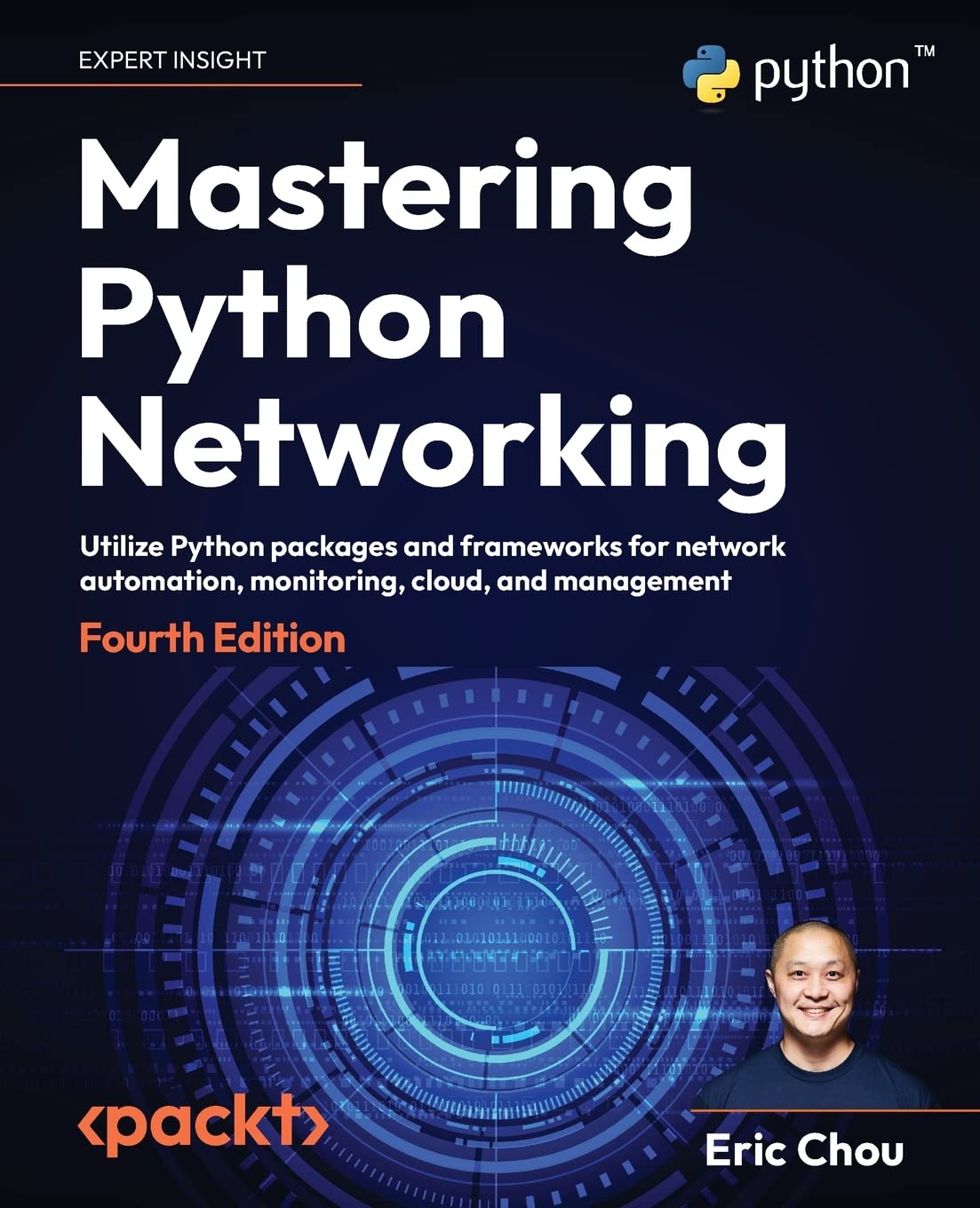
Mastering Python Networking – Fourth Edition: Utilize Python packages and frameworks for network automation, monitoring, cloud, and management
Price:$49.99– $39.99
(as of Nov 22,2024 08:29:22 UTC – Details)From the brand




Packt is a leading publisher of technical learning content with the ability to publish books on emerging tech faster than any other.
Our mission is to increase the shared value of deep tech knowledge by helping tech pros put software to work.
We help the most interesting minds and ground-breaking creators on the planet distill and share the working knowledge of their peers.
See Our Full Range
Cybersecurity and Pentesting
Linux and Networking
See Our Full Range
Publisher : Packt Publishing; 4th ed. edition (January 20, 2023)
Language : English
Paperback : 594 pages
ISBN-10 : 180323461X
ISBN-13 : 978-1803234618
Item Weight : 2.24 pounds
Dimensions : 9.25 x 7.52 x 1.2 inches
Mastering Python Networking – Fourth Edition: Utilize Python packages and frameworks for network automation, monitoring, cloud, and managementAre you looking to expand your knowledge and skills in Python networking? Look no further than the fourth edition of Mastering Python Networking. This comprehensive guide will help you utilize Python packages and frameworks for network automation, monitoring, cloud, and management.
Whether you are a beginner or a seasoned Python developer, this book will provide you with the tools and techniques needed to take your networking skills to the next level. From understanding the basics of networking protocols to implementing advanced network automation solutions, this book covers it all.
With real-world examples and practical exercises, you will learn how to leverage Python libraries such as Requests, Scapy, and Paramiko to automate network tasks, monitor network performance, and manage cloud resources. You will also explore popular frameworks like Flask and Django to build web-based network management applications.
So, if you want to become a master of Python networking and stay ahead in the ever-evolving world of IT, grab your copy of Mastering Python Networking – Fourth Edition today and start your journey towards network automation, monitoring, cloud, and management excellence.
#Mastering #Python #Networking #Fourth #Edition #Utilize #Python #packages #frameworks #network #automation #monitoring #cloud #management
